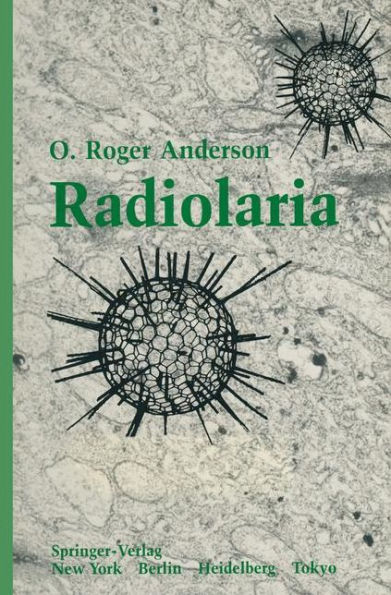Radiolaria
The study of marine plankton has traditionally focused on those or ganisms that appeared to have obvious ecological significance in understanding the major patterns of biological productivity, trophic relations, community structure, and the dynamic interaction of living things with the physical environment. Not infrequently, this thrust has centered on the apparently most abundant and/or larger members of the plankton community, including significant primary producers such as the diatoms, nonthecate algae, and flagellates, or the major con sumers—copepods, gelatinous metazoa, and other abundant metazoan invertebrates. Consequently, some of the less well recognized but also abundant microzooplankton have been given less attention. The radio laria, although widely studied as fossils by micropaleontologists, have in modem times. This is la been relatively neglected by biologists mentable given their widespread distribution in the oceans, remarkably complex form, and not infrequently localized abundance. Their diver sity of form, encompassing solitary species of microscopic dimensions and colonial species as large as several centimeters or more, challenges us to explain their evolutionary origins, explore their structural-func tional correlates, and comprehend the ecological basis for their wide spread occurrence in all oceans of the world fromihe greatest depth to the surface of the sea. Their intricate and aesthetically pleasing skeletons of enormous variety and fine-detailed design formed from amorphous silica (opaline glass) offer a unique biomineralized product that defies immediate biological explanation.
1029887850
Radiolaria
The study of marine plankton has traditionally focused on those or ganisms that appeared to have obvious ecological significance in understanding the major patterns of biological productivity, trophic relations, community structure, and the dynamic interaction of living things with the physical environment. Not infrequently, this thrust has centered on the apparently most abundant and/or larger members of the plankton community, including significant primary producers such as the diatoms, nonthecate algae, and flagellates, or the major con sumers—copepods, gelatinous metazoa, and other abundant metazoan invertebrates. Consequently, some of the less well recognized but also abundant microzooplankton have been given less attention. The radio laria, although widely studied as fossils by micropaleontologists, have in modem times. This is la been relatively neglected by biologists mentable given their widespread distribution in the oceans, remarkably complex form, and not infrequently localized abundance. Their diver sity of form, encompassing solitary species of microscopic dimensions and colonial species as large as several centimeters or more, challenges us to explain their evolutionary origins, explore their structural-func tional correlates, and comprehend the ecological basis for their wide spread occurrence in all oceans of the world fromihe greatest depth to the surface of the sea. Their intricate and aesthetically pleasing skeletons of enormous variety and fine-detailed design formed from amorphous silica (opaline glass) offer a unique biomineralized product that defies immediate biological explanation.
159.0
Out Of Stock
5
1

Radiolaria
355
Radiolaria
355Paperback(Softcover reprint of the original 1st ed. 1983)
$159.00
Related collections and offers
159.0
Out Of Stock

Product Details
| ISBN-13: | 9781461255383 |
|---|---|
| Publisher: | Springer New York |
| Publication date: | 10/05/2011 |
| Edition description: | Softcover reprint of the original 1st ed. 1983 |
| Pages: | 355 |
| Product dimensions: | 6.10(w) x 9.25(h) x 0.03(d) |
From the B&N Reads Blog
